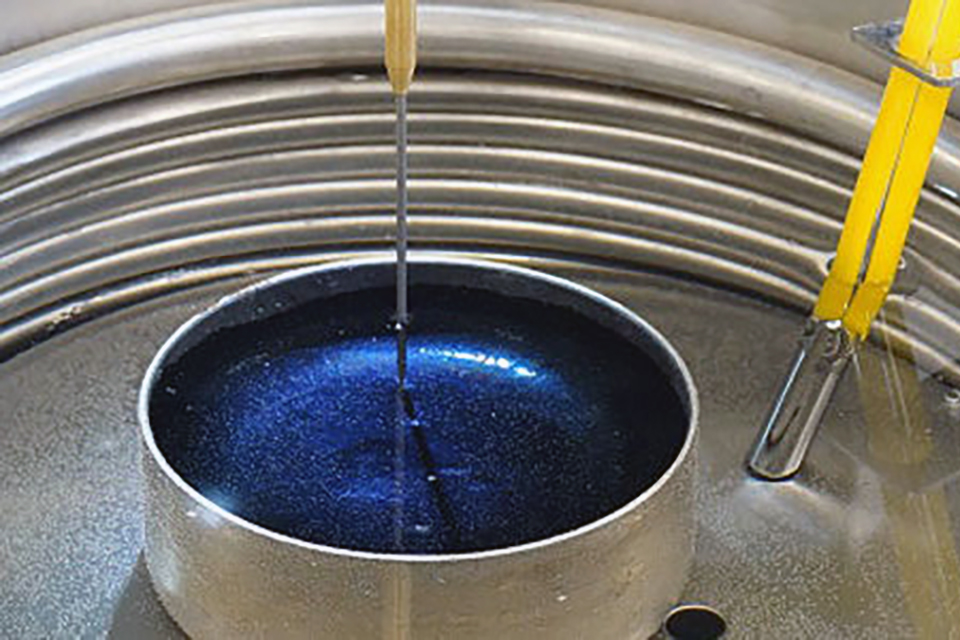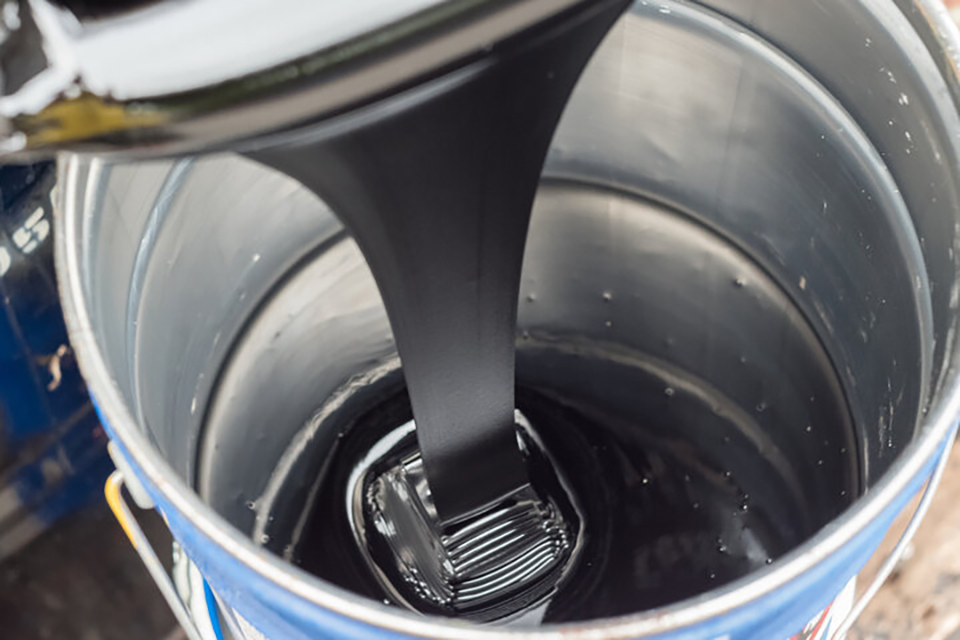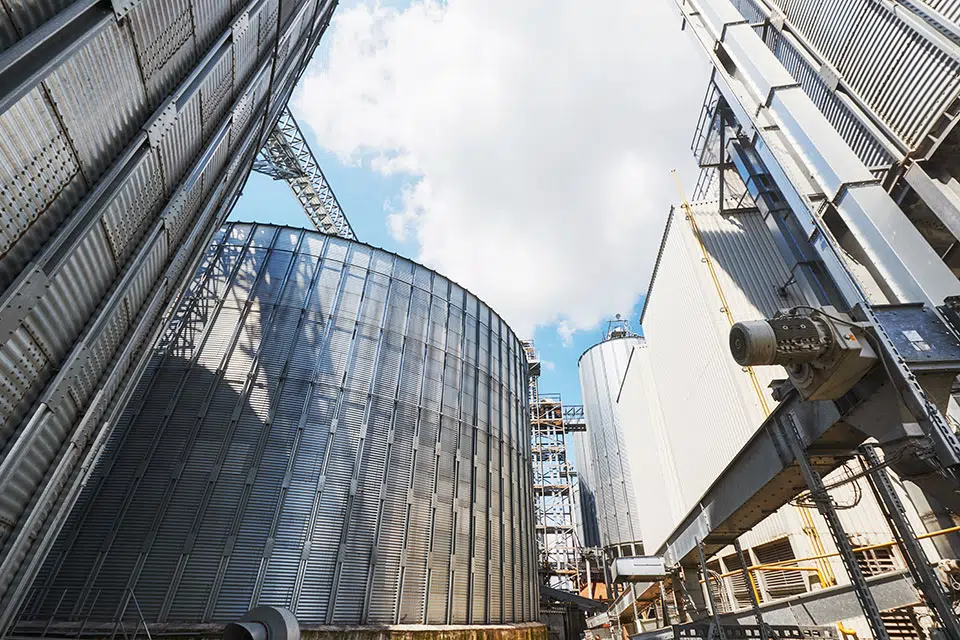Bitumen
Bitumen, also known as asphalt or tar, is a viscous, black, and highly sticky substance that occurs naturally or is obtained through the distillation of crude oil. It has been used for various purposes for thousands of years and holds significant importance in modern construction and infrastructure development.
PRODUCTION
Refinery production is a complex process involving the transformation of crude oil into various valuable products like gasoline, diesel, and jet fuel through distillation, cracking, and other refining techniques. This intricate operation requires meticulous management of resources, adherence to strict safety protocols, and continuous optimization to meet market demands efficiently.
- Specification
- Capacity
- Quality
- PRODUCTION
- What is Bitumen
- Origin Of Bitumen
- Difference of Bitumen,Tar and Aasphalt
- We provide best Bitumen with lowest price to all customers !
- Bitumen Types and Application
- Gilsonite (Natural Bitumen)
- Gilsonite Application
- Penetration grade
- Viscosity Grade
- Emulsion
- CutBack
- Oxidized
- Performance Grade Bitumen (PG Bitumen)
- 26220
- 38
- 1000T
- Bitumen Test
- Bitumen Price

What is Bitumen
Bitumen, a dense, sticky substance derived from crude oil, serves as a vital component in various industries, including road construction, waterproofing, and adhesives. This versatile material boasts excellent waterproofing properties and is widely used in roofing, sealing, and industrial coatings. Despite its numerous applications, bitumen’s production and utilization present environmental challenges, notably its non-renewable nature and carbon emissions. Efforts towards sustainable sourcing, recycling, and developing alternative materials are underway to mitigate these concerns and ensure a more environmentally responsible approach to utilizing this valuable resource.

Origin Of Bitumen
- Natural Bitumen : Unlike refined bitumen, which is produced through industrial processes, natural bitumen emerges spontaneously or with minimal human intervention. Formed over millions of years from the gradual breakdown of organic materials, such as ancient marine organisms, it undergoes geological processes like heat and pressure, resulting in its characteristic composition. Natural bitumen is often found in geological formations or seeps to the Earth’s surfaces.
- Crude Oil Distillation : Crude oil serves as the primary wellspring of bitumen in industrial processes. Following extraction, crude oil undergoes separation within distillation towers, where its diverse compounds are fractionated. Subsequently, the residual substance from this distillation, known as vacuum bottoms, undergoes processing to yield bitumen.

Difference of Bitumen,Tar and Aasphalt
Bitumen, tar, and asphalt are essential materials in construction, each with unique properties and origins. Bitumen, derived from petroleum, is renowned for its adhesive and waterproofing qualities, vital in road construction and industrial applications. Tar, sourced from organic materials like wood or coal through distillation, historically found use in waterproofing and road surfacing. Asphalt, a blend of bitumen and aggregates such as sand and gravel, forms durable road surfaces capable of withstanding heavy traffic loads. Understanding the distinctions between these substances is crucial for their proper utilization in various construction projects, ensuring longevity and resilience in infrastructure.
Bitumen Types and Application
Given the diversity of crude oils yielding distinct types of bitumen with varying properties, grading becomes imperative. Refineries employ standardized tests to assess viscosity, penetration, performance, and consistency, leading to the categorization of bitumen into penetration grades and viscosity grades. Additionally, other classifications such as cutback bitumen, oxidized bitumen, and bitumen emulsions are determined by their respective production methods
Gilsonite (Natural Bitumen)
Given the diversity of crude oils yielding distinct types of bitumen with varying properties, grading becomes imperative. Refineries employ standardized tests to assess viscosity, penetration, performance, and consistency, leading to the categorization of bitumen into penetration grades and viscosity grades. Additionally, other classifications such as cutback bitumen, oxidized bitumen, and bitumen emulsions are determined by their respective production methods
Gilsonite Application
Penetration grade
Penetration grade bitumen is categorized based on its consistency and hardness, determined by the depth (in tenths of a millimeter) to which a standard needle penetrates it under specific conditions. These grades range from soft to hard, with lower penetration values indicating harder bitumen suitable for high-temperature environments in road construction.
| Application | Softening Point | Penetration Value | Penetration Grade |
| Tropical areas Mean T > 24° C | 52-60 ° C | 40-50 | 40-50 |
| Mild climate region 7° C < Mean T < 24° C | 49-56 ° C | 60-70 | 60-70 |
| Cold climate Mean T < 7° C | 45-52 ° C | 80-100 | 80-100 |
Viscosity Grade
Bitumen viscosity grade is a classification system based on the flow characteristics of bitumen at specific temperatures. It measures the resistance of bitumen to flow and deformation. Viscosity grades categorize bitumen into different classes, typically ranging from VG10 to VG40, with higher numbers indicating higher viscosity. This grading system helps in selecting the appropriate bitumen for specific applications, such as road construction, where climate conditions and traffic loads influence the choice of viscosity grade..
| Typical Applications | Viscosity Range at 60°C (Absolute Viscosity) | Viscosity Grade |
|---|---|---|
| cold region road , spraying and etc | 800-1200 | VG-10 Bitumen |
| Used in cold regions for road construction | 1600-2400 | VG-20 Bitumen |
| Maximizes asphalt performance in hot regions | 2400-3600 | VG-30 Bitumen |
| Well suited for road construction in hot weather | 3200-4000 | VG-40 Bitumen |
The reason for using viscosity grading is the need for a more accurate assessment of bitumen’s behavior at high temperatures. Unlike penetration grading, viscosity grading accounts for the viscosity changes that bitumen undergoes at elevated temperatures, ensuring consistency in performance across various weather conditions and facilitating better prediction of its behavior, particularly in hot climates.
Emulsion
Bitumen emulsion is a dispersion of bitumen droplets in water, stabilized with an emulsifying agent. It is a versatile and environmentally friendly alternative to traditional hot bitumen for various applications in road construction, waterproofing, and industrial processes. Emulsion bitumen offers advantages such as lower energy consumption, reduced emissions, and enhanced workability, making it suitable for use in diverse weather conditions and on different surfaces. Its ability to coat aggregates uniformly and adhere well to substrates makes it an excellent choice for chip seal applications, surface dressing, and tack coats in pavement construction.
Emulsions simplify transport, handling, and storage, offering economic and safe advantages. They’re classified by particle charge and setting time. Anionic and cationic emulsions exist based on charge. Setting time categorizes emulsions by how quickly they bind aggregates. Each grade suits specific applications based on viscosity, setting time, and particle charge. Less viscous than other bitumen types due to water and emulsifiers, emulsions are used for spraying and road maintenance. Common applications include tack coats, chip seals, slurry seals, and micro surfacing in modern bitumen industries.

CutBack
Cutback bitumen is a crucial component in road construction and maintenance due to its versatility and durability. It is created by blending bitumen with a solvent, such as kerosene or diesel, to reduce its viscosity and make it easier to apply. This allows for application in various temperatures and weather conditions. Once applied, the solvent evaporates, leaving behind a strong asphalt binder that effectively binds aggregates together, creating a resilient road surface. Cutback bitumen is preferred for its ability to adhere well to different types of surfaces, ensuring excellent pavement performance and longevity, making it a cornerstone in the infrastructure development and maintenance industry.
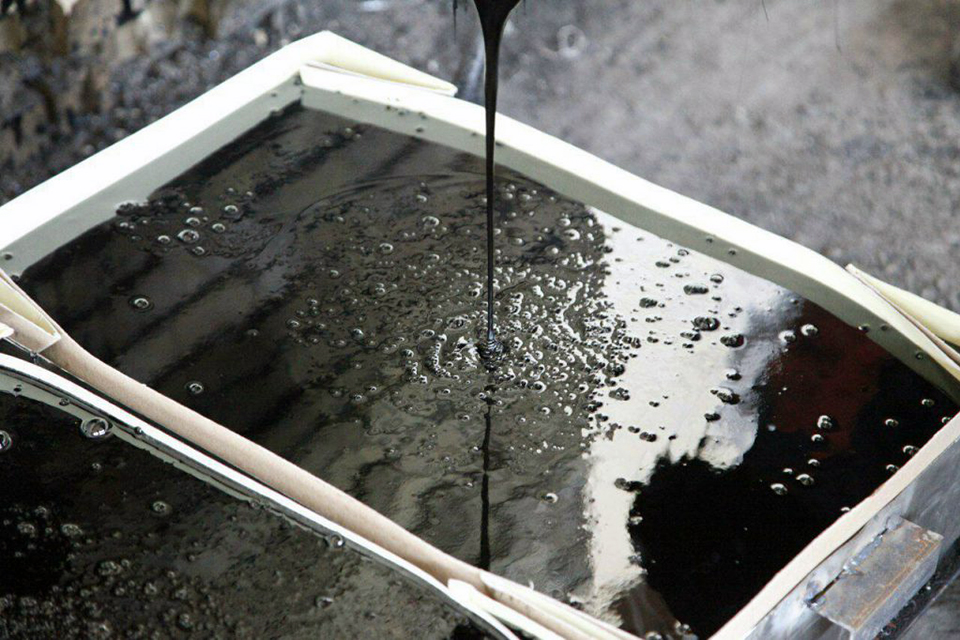
Oxidized
Refineries produce oxidized bitumen through a process involving the introduction of hot air into penetration bitumen. This results in chemically stable bitumen with enhanced durability and impermeability to water, making it ideal for insulation purposes.
Oxidized bitumen exhibits lower penetration and a higher softening point compared to pure bitumen, leading to its classification based on these attributes.
Its versatility finds application in various sectors. It serves as a reliable waterproofing agent in dam construction, buildings, and road projects when combined with other bitumen types. Furthermore, in industries such as oil and gas, oxidized bitumen is utilized to shield pipelines from corrosion, highlighting its significance across diverse industrial landscapes.
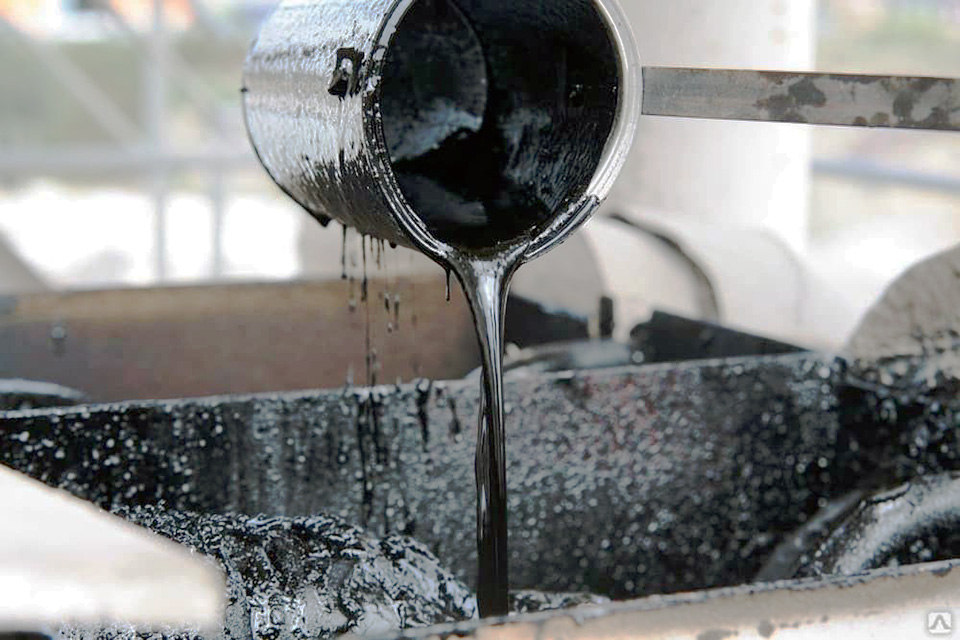
Performance Grade Bitumen (PG Bitumen)
Bitumen Performance Grade (PG) categorizes bitumen based on its performance across different temperatures, with high and low-temperature classifications. High-temperature resistance addresses issues like rutting, while low temperatures pose the risk of cracking. Evaluation involves exposing bitumen to anticipated environmental temperatures, with a subsequent 6 °C increase. Grades like PG 58-34, 64-22, 64-28, and 76-22 resist thermal cracking, while PG 70-22, 70-28, 76-28, and 82-22 show higher resistance to rutting. Polymer modification occurs if the sum of high and low temperature numbers exceeds 90. Performance-grade bitumen is crucial in construction for pavement and asphalt applications.
International Customer
26220
Employees
38
Daily Production
1000T
Bitumen Test
Quality tests for bitumen serve as essential criteria for assessing its quality and classification within the industry. These tests are conducted to ensure quality control and guarantee the integrity of bitumen loads during both export and import processes at origin and destination ports.
In accordance with the SGS standard, the summarized bitumen tests comprise:
Bitumen Manufacturers
In the realm of bitumen manufacturing, GoldenBatis stands as a prominent force, contributing significantly to the global supply chain. With a focus on excellence and innovation, we play a pivotal role in shaping industry dynamics.
While China leads in production, closely followed by the United States, GoldenBatis asserts its presence with substantial annual output and a commitment to quality. Our strategic partnerships and global outreach ensure we meet the evolving needs of clients worldwide.
Despite competition from established players like Exxon Mobil Corporation and Royal Dutch Shell Plc, GoldenBatis distinguishes itself through innovation and customer-centricity. As we continue to expand our footprint, we are committed to setting new standards for success in bitumen manufacturing.
Bitumen Consumption Annualy
Bitumen has witnessed a steady rise in consumption from the early 2000s to 2020, driven primarily by the road construction industry. With a demand close to 100 million barrels annually, this surge can be attributed to several factors:
– Expansion and maintenance of communication roads, extending the lifespan of existing asphalt
– Increased roofing construction
– Utilization in various civil works and industrial projects globally, including dam construction
Several factors influence global bitumen demand annually, including economic conditions, government road budgets, and unforeseen events such as natural disasters or unexpected incidents like terrorism or the COVID-19 pandemic.
Asia-Pacific emerges as the largest consumer of bitumen, particularly in China and India, driven by eco-friendly construction projects and extensive road network improvements. North America follows suit, with the United States and Canada leading consumption, while African countries exhibit the lowest consumption levels.
The year 2020 saw bitumen consumption surpassing 100 million cubic meters, although hindered by the pandemic and subsequent lockdowns, halting numerous development projects worldwide. Despite challenges, the gradual control of the pandemic, coupled with vaccination efforts, saw a resurgence in construction and industrial projects, consequently boosting bitumen consumption.
However, projections indicate a decline in consumption by less than 4% from 2022 to 2026, primarily attributed to reduced bitumen usage in road construction projects, notably the shift towards environmentally friendly road production in China.
FREE QUOTE
Do you need help?
Fill out this form to get in touch.
Environmental Impacts Of Bitumen
Bitumen, a key component in asphalt and roofing materials, carries significant environmental ramifications throughout its lifecycle. Extraction methods, particularly from oil sands, result in habitat destruction and groundwater contamination. The refining process emits pollutants, contributing to air and water pollution and exacerbating climate change. Bitumen’s viscosity makes spill cleanup challenging, causing prolonged environmental damage and endangering wildlife. Moreover, its use in road construction often leads to increased urban heat island effect and disruption of natural drainage patterns, impacting local ecosystems. Addressing these environmental concerns requires comprehensive regulations, investment in sustainable alternatives, and a shift towards eco-friendly infrastructure development practices.
Bitumen contents and fumes
Bitumen, a vital material in construction, comprises hydrocarbons like asphaltenes and resins. While crucial for roadways and waterproofing, bitumen fumes pose health risks due to volatile compounds. Mitigation includes ventilation and low-fume formulations, advancing safety in handling and application.
Bitumen contents and fumes
Bitumen, a vital material in construction, comprises hydrocarbons like asphaltenes and resins. While crucial for roadways and waterproofing, bitumen fumes pose health risks due to volatile compounds. Mitigation includes ventilation and low-fume formulations, advancing safety in handling and application.
Packaging
Bitumen packaging typically involves drums, jumbo bags, or bulk containers. Drums offer convenience for small-scale projects, while bulk containers suit larger operations, providing cost-effective storage solutions. Proper packaging ensures transportation efficiency and prevents contamination, enhancing the usability and longevity of bitumen products throughout the supply chain.
Storage
Bitumen storage requires controlled environments to maintain its properties. Typically stored in tanks or containers with heating systems to prevent solidification, ensuring easy handling. Proper storage conditions, including temperature control and protection from moisture, are crucial to preserve bitumen quality for construction applications.
Shipping Conditions
Bitumen shipping demands careful handling to maintain its integrity. Transported in heated tanks or specialized containers to prevent solidification, ensuring consistency upon arrival. Strict temperature controls and protection from moisture during transit are essential to preserve bitumen’s properties, guaranteeing optimal performance in construction upon delivery.
Bitumen Price
The current market for bitumen presents a complex picture for Iranian producers like ourselves. Here’s a breakdown of the key factors influencing price direction:
- Global Oil Trends: Oil prices, a major influence on bitumen, have seen a recent uptick. This could translate to some price support for bitumen as well. However, anticipation of a potential US interest rate cut in 2024 might weaken the dollar and dampen oil prices in the long run.
- Geopolitical Landscape: The ongoing conflict between Russia and Ukraine continues to disrupt global energy markets. While this might create temporary price volatility, a prolonged conflict could negatively impact demand due to recessionary fears.
- Demand Fluctuations: Reduced demand for bitumen shipments has been observed in key regions like Europe and the Mediterranean. This, coupled with a decrease in the value of crude oil and bunker fuel, might exert downward pressure on bitumen prices.
- China’s Covid-Zero Policy: China’s strict lockdowns to control COVID-19 have weakened demand for oil and related products like bitumen. This could further limit price increases.
Overall, the near-term outlook for bitumen pricing remains uncertain. While rising oil prices offer some hope, geopolitical tensions and fluctuating demand create countervailing forces. Staying informed about these factors and their evolution will be crucial for navigating the market effectively.
Get the latest prices on our products
Rate Our Article

